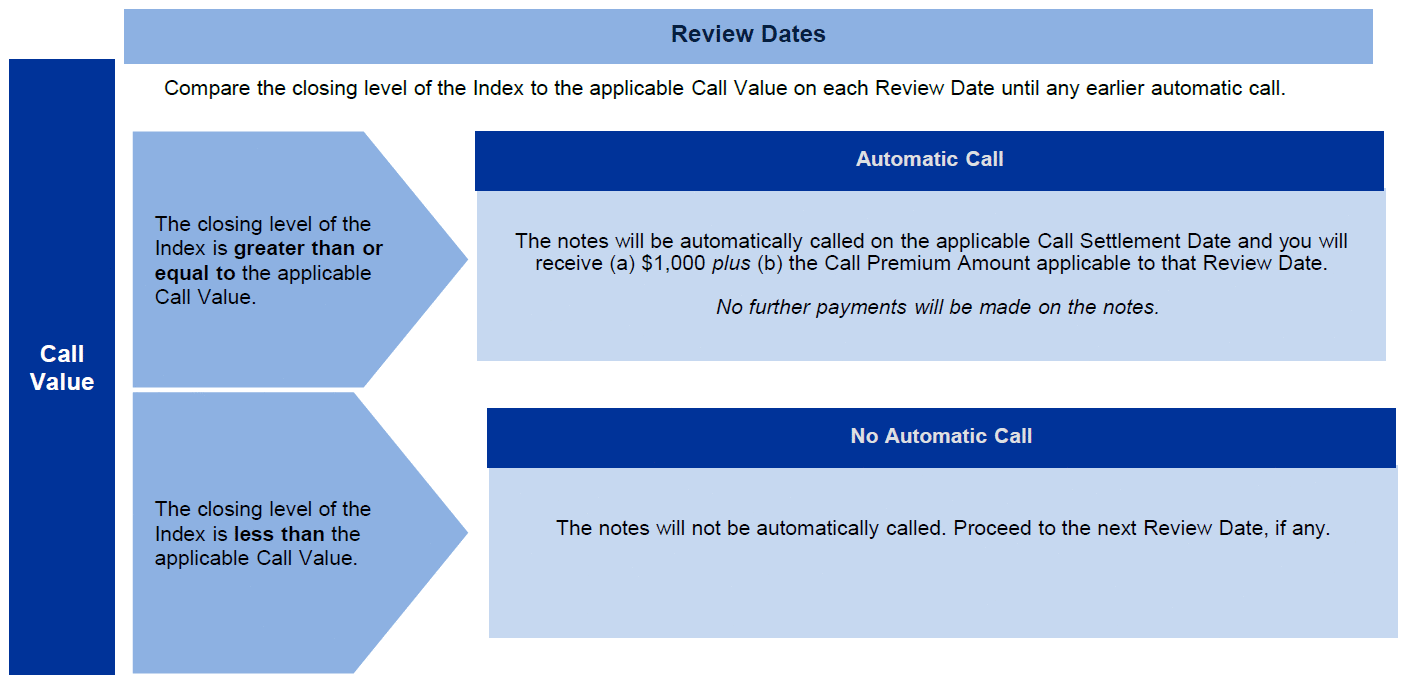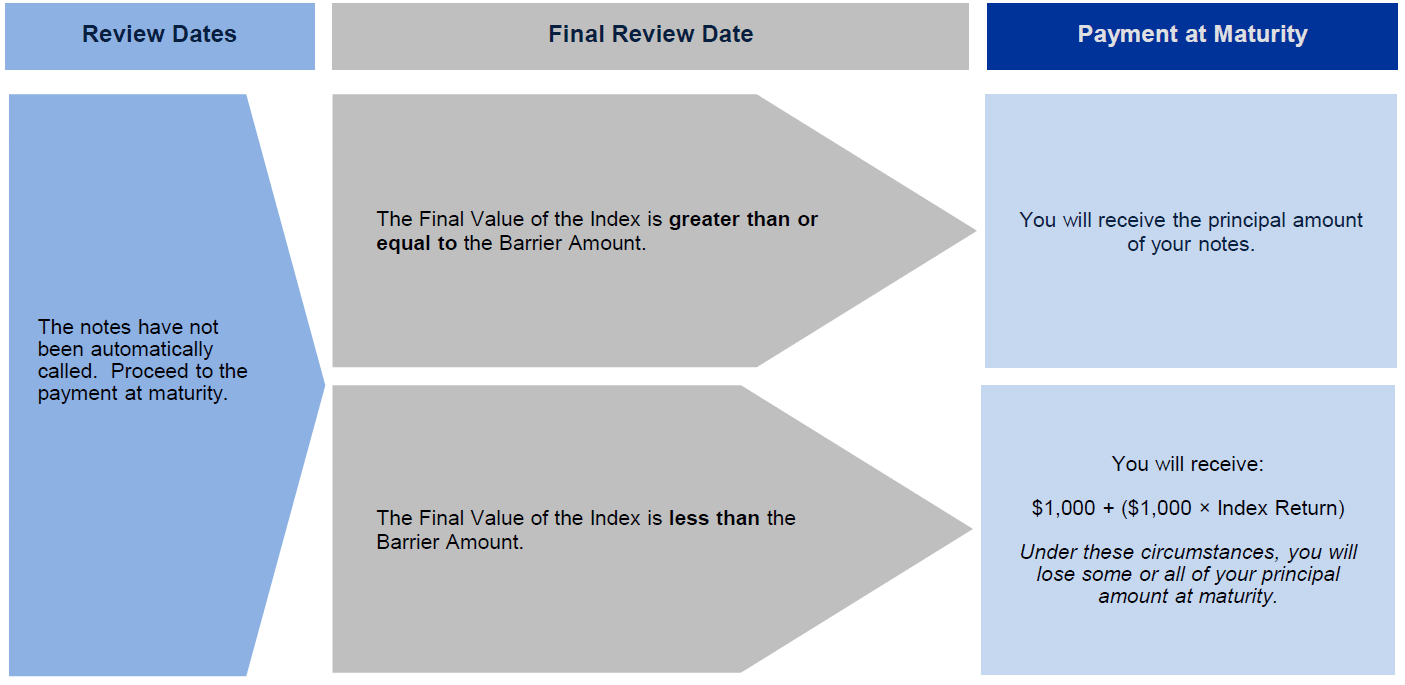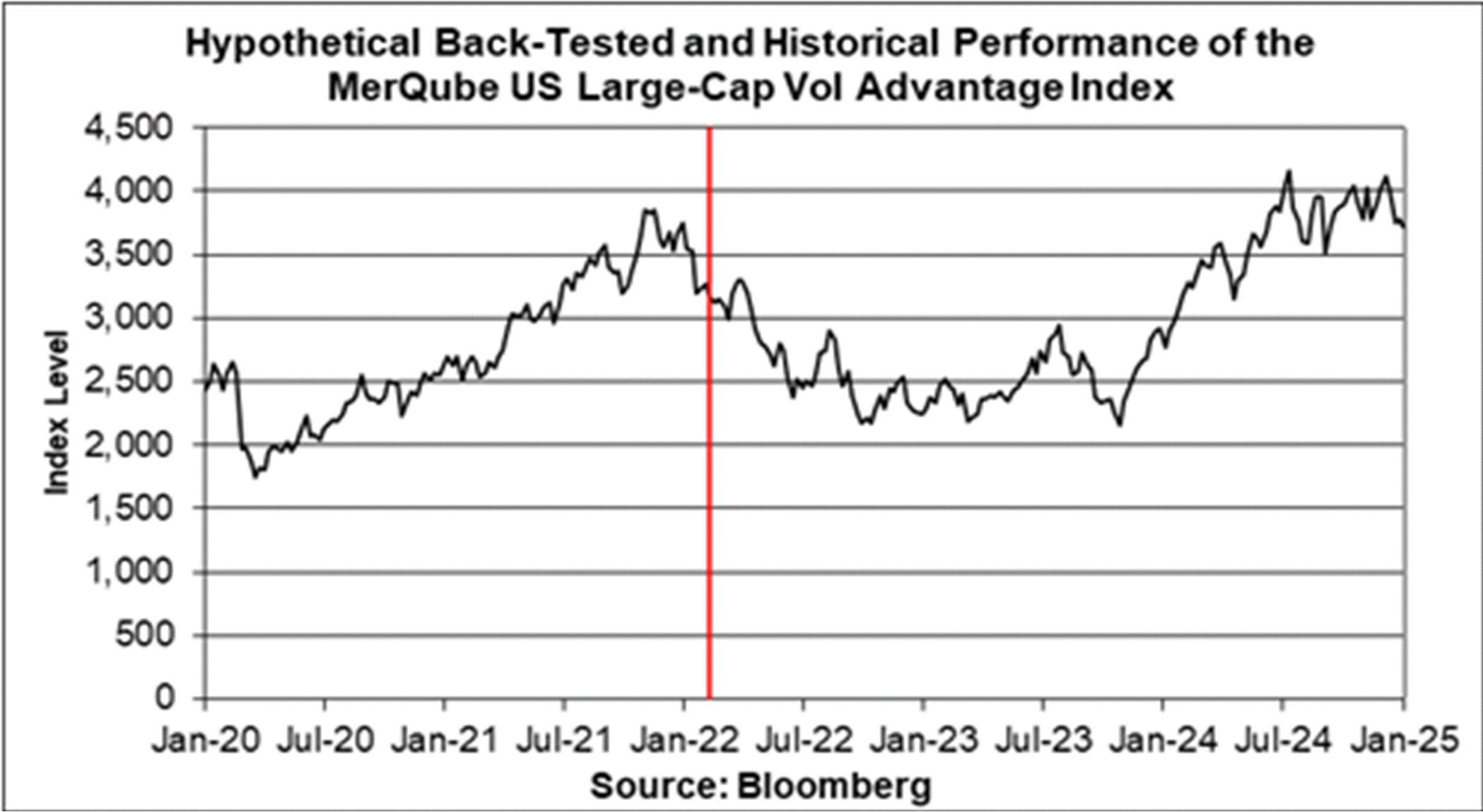●THE VALUE OF THE NOTES AS PUBLISHED BY JPMS (AND WHICH MAY BE REFLECTED ON CUSTOMER ACCOUNT STATEMENTS) MAY BE HIGHER THAN THE THEN-CURRENT ESTIMATED VALUE OF THE NOTES FOR A LIMITED TIME PERIOD —
We generally expect that some of the costs included in the original issue price of the notes will be partially paid back to you in connection with any repurchases of your notes by JPMS in an amount that will decline to zero over an initial predetermined period. See “Secondary Market Prices of the Notes” in this pricing supplement for additional information relating to this initial period. Accordingly, the estimated value of your notes during this initial period may be lower than the value of the notes as published by JPMS (and which may be shown on your customer account statements).
●SECONDARY MARKET PRICES OF THE NOTES WILL LIKELY BE LOWER THAN THE ORIGINAL ISSUE PRICE OF THE NOTES —
Any secondary market prices of the notes will likely be lower than the original issue price of the notes because, among other things, secondary market prices take into account our internal secondary market funding rates for structured debt issuances and, also, because secondary market prices may exclude selling commissions, projected hedging profits, if any, and estimated hedging costs that are included in the original issue price of the notes. As a result, the price, if any, at which JPMS will be willing to buy the notes from you in secondary market transactions, if at all, is likely to be lower than the original issue price. Any sale by you prior to the Maturity Date could result in a substantial loss to you.
●SECONDARY MARKET PRICES OF THE NOTES WILL BE IMPACTED BY MANY ECONOMIC AND MARKET FACTORS —
The secondary market price of the notes during their term will be impacted by a number of economic and market factors, which may either offset or magnify each other, aside from the selling commissions, projected hedging profits, if any, estimated hedging costs and the level of the Index. Additionally, independent pricing vendors and/or third party broker-dealers may publish a price for the notes, which may also be reflected on customer account statements. This price may be different (higher or lower) than the price of the notes, if any, at which JPMS may be willing to purchase your notes in the secondary market. See “Risk Factors — Risks Relating to the Estimated Value and Secondary Market Prices of the Notes — Secondary market prices of the notes will be impacted by many economic and market factors” in the accompanying product supplement.
Risks Relating to the Index
●JPMORGAN CHASE & CO. IS CURRENTLY ONE OF THE COMPANIES THAT MAKE UP THE S&P 500® INDEX,
but JPMorgan Chase & Co. will not have any obligation to consider your interests in taking any corporate action that might affect the level of the S&P 500® Index.
●THE INDEX MAY NOT BE SUCCESSFUL OR OUTPERFORM ANY ALTERNATIVE STRATEGY THAT MIGHT BE EMPLOYED IN RESPECT OF THE FUTURES CONTRACTS —
No assurance can be given that the investment strategy on which the Index is based will be successful or that the Index will outperform any alternative strategy that might be employed with respect to the Futures Contracts.
●THE INDEX MAY NOT APPROXIMATE ITS TARGET VOLATILITY —
No assurance can be given that the Index will maintain an annualized realized volatility that approximates its target volatility of 35%. The Index’s target volatility is a level of implied volatility and therefore the actual realized volatility of the Index may be greater or less than the target volatility. On each weekly Index rebalance day, the Index’s exposure to the Futures Contracts is set equal to (a) the 35% implied volatility target divided by (b) the one-week implied volatility of the SPY Fund, subject to a maximum exposure of 500%. The Index uses the implied volatility of the SPY Fund as a proxy for the volatility of the Futures Contracts. However, there is no guarantee that the methodology used by the Index to determine the implied volatility of the SPY Fund will be representative of the implied or realized volatility of the Futures Contracts. The performance of the SPY Fund may not correlate with the performance of the Futures Contracts, particularly during periods of market volatility. In addition, the volatility of the Futures Contracts on any day may change quickly and unexpectedly and realized volatility may differ significantly from implied volatility. In general, over time, the realized volatilities of the SPY Fund and the Futures Contracts have tended to be lower than their respective implied volatilities; however, at any time those realized volatilities may exceed their respective implied volatilities, particularly during periods of market volatility. Accordingly, the actual annualized realized volatility of the Index may be greater than or less than the target volatility, which may adversely affect the level of the Index and the value of the notes.
●THE INDEX IS SUBJECT TO RISKS ASSOCIATED WITH THE USE OF SIGNIFICANT LEVERAGE —
On a weekly Index rebalance day, the Index will employ leverage to increase the exposure of the Index to the Futures Contracts if the implied volatility of the SPY Fund is below 35%, subject to a maximum exposure of 500%. Under normal market conditions in the past, the SPY Fund has tended to exhibit an implied volatility below 35%. Accordingly, the Index has generally employed




